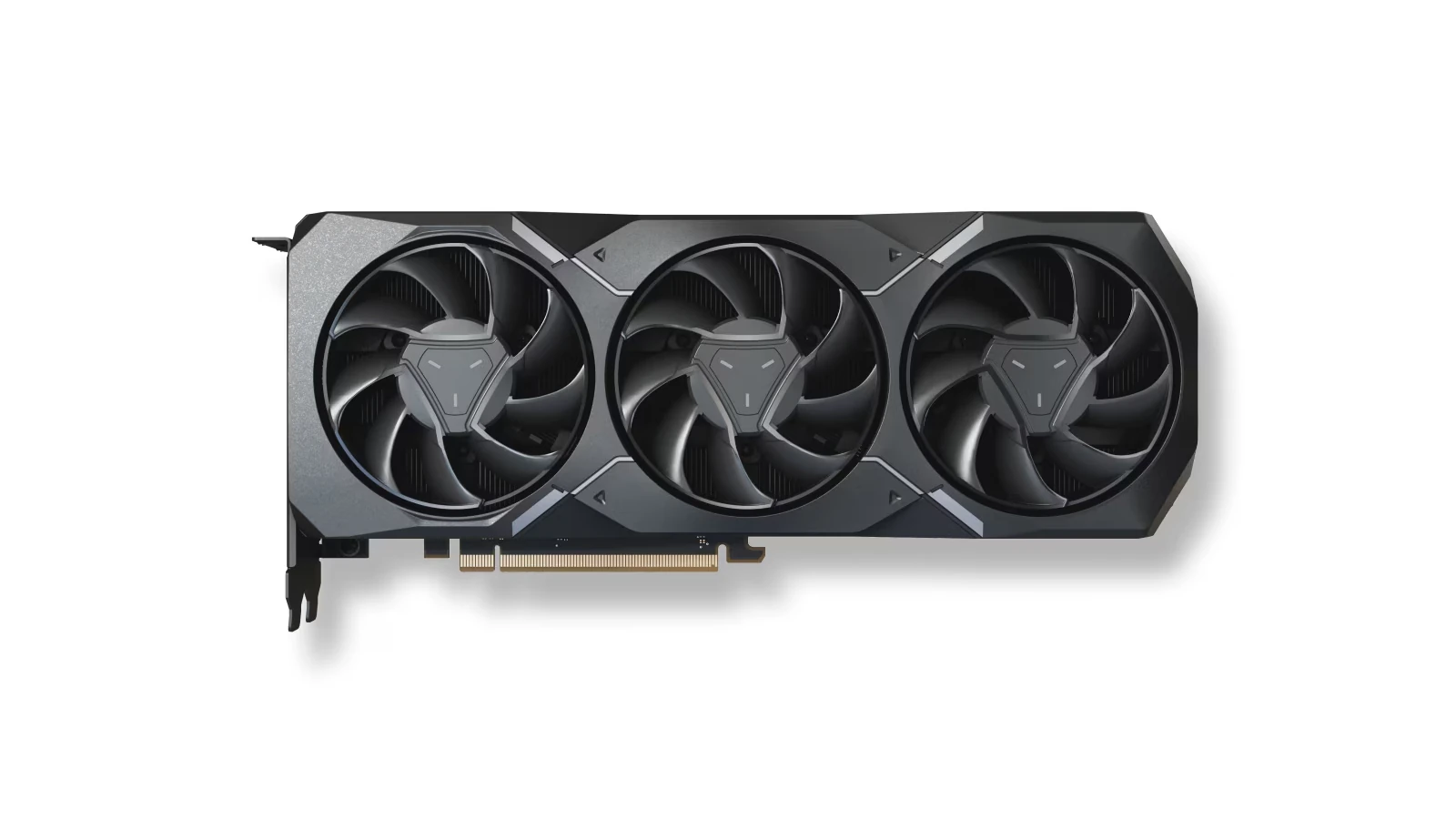AMD’s upcoming Radeon RX 9070 XT graphics card brings exciting news for budget-conscious gamers. The new GPU will launch at $599 MSRP, positioning it $150 below NVIDIA’s RTX 5070 Ti which costs $749.
This competitive pricing strategy from AMD signals an aggressive push into the mainstream gaming GPU market. The standard RX 9070 model is expected to retail at $499, creating a strong value proposition across multiple price points for gamers seeking high performance without breaking the bank.
The leaked pricing information suggests AMD aims to disrupt NVIDIA’s dominance in the mid-range segment. These price points mark a significant shift in the gaming GPU landscape as AMD leverages its RDNA 4 architecture to deliver competitive performance at more accessible price points.
Graphics Card Showdown: AMD vs. NVIDIA
AMD’s Pricing Strategy
AMD is expected to price its upcoming Radeon 9070 XT graphics card aggressively. Rumors suggest a price point around $599. This is a strategic move to compete with NVIDIA’s RTX 5070 Ti. The RTX 5070 Ti is anticipated to cost around $749. This price difference could make the 9070 XT a compelling option for gamers seeking high performance without the premium price tag.
Performance Expectations
While pricing is a key factor, performance is equally important. It is anticipated that the 9070 XT will offer performance comparable to the RTX 5070 Ti. If AMD can deliver similar or better performance at a lower price, it will put significant pressure on NVIDIA. Gamers will have a tough choice to make.
Architecture: RDNA 4
GPU Core: Likely a Navi 4x variant, but the exact configuration is unknown.
Compute Units: Number varies depending on the rumor, but likely fewer than the top-tier card in the lineup.
Memory: GDDR7 is anticipated, but capacity and speed are uncertain. Some rumors suggest 16GB, others suggest more. The memory interface width is also subject to speculation.
Performance Target: Aimed to compete with the NVIDIA RTX 5070 Ti.
Power Consumption: TDP is unknown and subject to change.
Other Features: Support for the latest DirectX versions, ray tracing, and AMD’s FidelityFX Super Resolution (FSR) technology are expected.
The Competitive Landscape
This potential price war between AMD and NVIDIA is beneficial for consumers. Increased competition often leads to lower prices and better products. It forces both companies to innovate and offer the best possible value. The graphics card market is dynamic, and these pricing strategies could shift the balance of power.
Comparing the Cards
It’s important to consider more than just price. Factors like power consumption, cooling requirements, and specific features also play a role. Here’s a comparison table based on current information and rumors:
| Feature | AMD Radeon 9070 XT (Rumored) | NVIDIA RTX 5070 Ti (Rumored) |
|---|---|---|
| Price | $599 | $749 |
| Performance | Comparable to RTX 5070 Ti | Comparable to 9070 XT |
| Target Audience | Gamers seeking value | Gamers seeking top performance |
Choosing the Right Card
The best graphics card for you depends on your individual needs and budget. If you’re looking for the best possible performance and are willing to pay a premium, the RTX 5070 Ti might be the right choice. However, if you’re looking for excellent performance at a more affordable price, the 9070 XT could be the better option. It all comes down to the final specifications and benchmarks once both cards are officially released.
Beyond Gaming: Other Considerations
While gaming performance is a primary focus, graphics cards are also used for other tasks. Content creation, video editing, and 3D rendering all benefit from a powerful GPU. If you plan to use your graphics card for these types of applications, you should consider the specific requirements of those programs. Some programs may be optimized for NVIDIA or AMD hardware.
The Importance of Drivers
Regardless of which graphics card you choose, drivers are essential. Updated drivers ensure optimal performance and compatibility with the latest games and software. Both AMD and NVIDIA regularly release driver updates. It’s a good idea to keep your drivers up to date.
Future of Graphics Cards
The graphics card market is constantly evolving. New technologies and architectures are always being developed. Ray tracing, DLSS, and FSR are just a few examples of recent innovations. These technologies enhance the gaming experience and provide more realistic visuals. As technology advances, we can expect even more impressive graphics cards in the future.
Considering Used Options
If you’re on a tight budget, consider the used market. You might be able to find previous generation graphics cards at significantly lower prices. However, it’s essential to do your research and make sure you’re buying from a reputable seller. Used cards may have been used for mining or may have other issues.
Power Supply Considerations
A powerful graphics card requires a robust power supply. Before upgrading your GPU, check the power requirements and make sure your PSU can handle it. An inadequate power supply can lead to instability and even damage your components.
Cooling Solutions
High-performance graphics cards generate a lot of heat. Proper cooling is essential to prevent overheating and ensure stable performance. Consider the cooling solution of the graphics card you choose and make sure your case has adequate airflow.
Monitors and Resolution
Your monitor also plays a role in your gaming experience. A high-resolution monitor requires a powerful graphics card to drive it. If you’re planning to game at 4K resolution, you’ll need a top-of-the-line GPU.
The Role of VRAM
Video RAM (VRAM) is important for storing textures and other game data. More VRAM is generally better, especially for high-resolution gaming. Consider the amount of VRAM when choosing a graphics card.
CPU Bottlenecks
In some cases, your CPU might bottleneck your graphics card. This means that your CPU is not powerful enough to keep up with your GPU, limiting its performance. If you have a relatively old CPU, it might be worth considering an upgrade as well.
Overclocking
Some users choose to overclock their graphics cards to get even more performance. However, overclocking can void your warranty and carries some risk. If you’re not comfortable with overclocking, it’s best to leave your card at its default settings.
Community and Reviews
Before making a purchase, read reviews and watch benchmarks of the graphics cards you are considering. The online gaming community is a valuable resource for information and opinions.
DirectX and APIs
Graphics cards support different APIs like DirectX and Vulkan. These APIs are used by games to communicate with the graphics card. Make sure the card you choose supports the APIs used by the games you want to play.
Ray Tracing and DLSS/FSR Deep Dive
Ray tracing is a rendering technique that simulates the way light interacts with objects. It creates more realistic and immersive visuals. However, ray tracing is computationally intensive and requires a powerful graphics card.
DLSS (Deep Learning Super Sampling) and FSR (FidelityFX Super Resolution) are technologies that upscale lower-resolution images to higher resolutions. This allows for better performance without sacrificing too much visual quality. These technologies are particularly useful for ray tracing. They can significantly improve frame rates in games that use ray tracing. DLSS is NVIDIA’s technology, while FSR is AMD’s. Both technologies have their strengths and weaknesses. DLSS generally provides better image quality, but FSR is more widely compatible.
Choosing Between DLSS and FSR
The choice between DLSS and FSR depends on your graphics card and the games you play. If you have an NVIDIA graphics card, DLSS is likely the better choice. If you have an AMD graphics card, FSR is the only option. However, some games support both technologies, giving you the flexibility to choose. In these cases, it’s worth experimenting with both to see which one provides the best results for you. Consider performance and image quality when making your decision. Look at benchmarks and comparisons online to see how different games perform with each technology.
The Future of Ray Tracing and Upscaling
Ray tracing and upscaling technologies like DLSS and FSR are constantly improving. Newer generations of these technologies offer better performance and image quality. As graphics cards become more powerful, ray tracing will become more prevalent in games. Upscaling technologies will also continue to play an important role, allowing gamers to achieve high frame rates at high resolutions.
Beyond the Hardware: The Software Ecosystem
While the hardware itself is crucial, the software ecosystem surrounding it is also important. NVIDIA and AMD both provide software suites that allow you to manage your graphics card settings, update drivers, and optimize game performance. These software tools can be very helpful for getting the most out of your hardware.
The Importance of Game Optimization
Game developers also play a role in graphics card performance. Well-optimized games can run smoothly even on less powerful hardware. Conversely, poorly optimized games can struggle even on high-end systems. Look for games that are known for their good optimization.
The Value Proposition
Ultimately, the value proposition of a graphics card comes down to its price-to-performance ratio. The AMD Radeon 9070 XT, with its aggressive pricing strategy, aims to offer excellent value to gamers. However, it’s important to wait for official benchmarks and reviews before making a final decision. The RTX 5070 Ti, while more expensive, may offer better performance or features that justify the higher price tag.
The graphics card market is constantly changing. New products are released regularly, and prices fluctuate. It’s important to stay informed about the latest developments to make the best purchasing decisions. Read reviews, watch benchmarks, and follow industry news to stay up to date.
Key Takeaways
- AMD’s RX 9070 XT offers substantial savings at $599 compared to NVIDIA’s $749 RTX 5070 Ti
- The strategic pricing positions AMD to capture a larger share of the mainstream gaming market
- Gamers benefit from increased competition with more affordable high-performance GPU options
Market and Pricing Analysis of the Radeon RX 9070 XT
AMD’s strategic pricing of the RX 9070 XT at $599 positions it as a strong competitor in the mid-range GPU segment, offering potential performance advantages at a significantly lower price point than NVIDIA’s RTX 5070 Ti.
Competitive Landscape and Pricing Strategy
The $599 MSRP of the Radeon RX 9070 XT creates a compelling value proposition against NVIDIA’s RTX 5070 Ti, which is priced at $749.
This $150 price difference represents a 20% cost reduction while targeting similar performance levels. AMD’s aggressive pricing strategy aims to capture market share in the competitive mid-range segment.
The non-XT variant of the RX 9070 is expected to launch at $499, creating a well-structured product stack in AMD’s RDNA 4 lineup.
Projected Performance and Technical Specifications
The RX 9070 XT is built on AMD’s RDNA 4 architecture, marking a significant advancement over the previous generation RDNA 3 GPUs.
Early reports suggest the card will target high-performance 1440p gaming, with competitive 4K capabilities. The card is expected to feature GDDR6 memory and support AMD’s latest FSR technology.
AMD does not expect the RX 9070 XT to outperform their previous flagship RX 7900 XTX, placing it firmly in the mainstream performance bracket.
Current market indicators point to the RX 9070 XT offering strong ray tracing capabilities and improved gaming performance compared to its predecessor, making it an attractive option for gamers seeking high-value performance.







